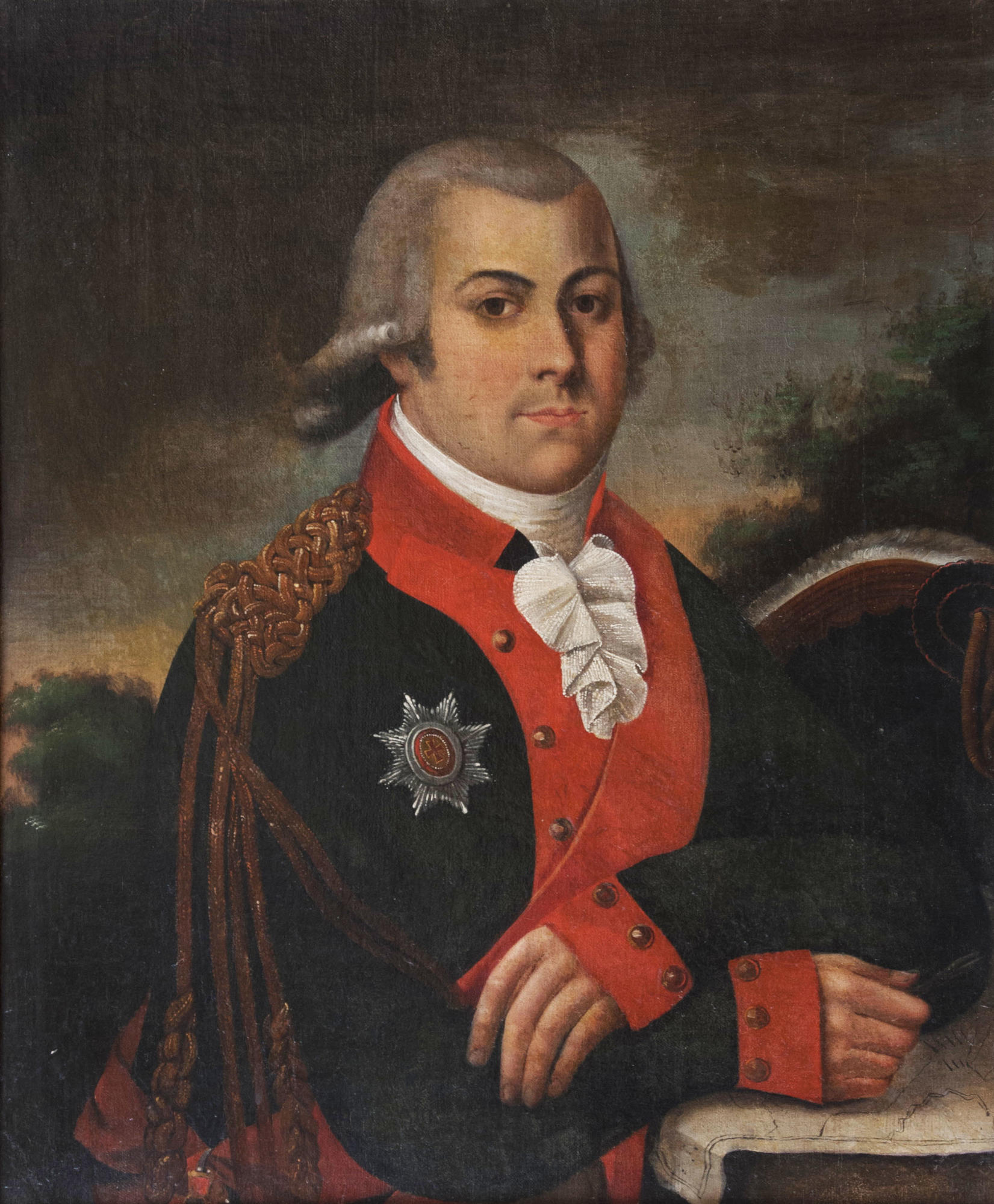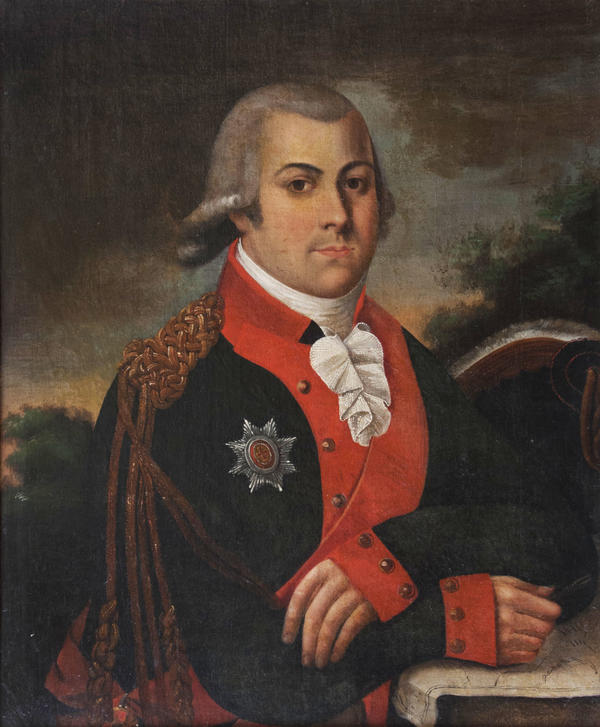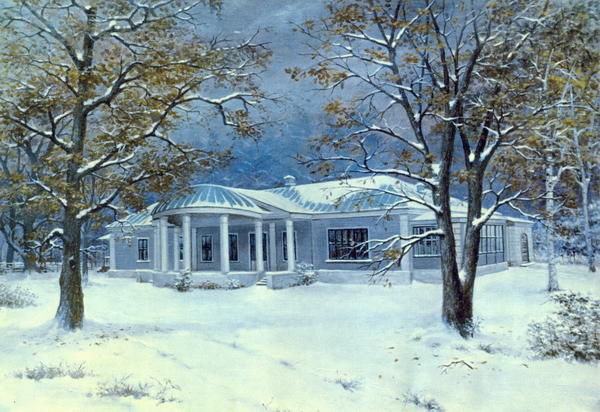The portrait of Abram Boratynsky by the brush of an unknown painter was kept in the collection belonging to his direct descendant Michail Boratynsky until the year of 1919. Then, together with other portraits of the Boratynskys’ members, it was given to the Provincial Tambov Museum of Fine Arts, which later became the part of the Tambov Regional Ethnography Museum.
Abram Boratynsky was the eldest son of Hereditary Nobleman Andrei Boratynsky. He was born in August in 1767 in the Smolensk province, in the family estate Goloshchapovo. When he was eight, his father assigned him to the Preobrazhensky regiment as a corporal of the Imperial Guard. At the age of 18, Abram entered the active military service joining the Semenovsky regiment.
In 1789, Boratynsky went to the Russian-Swedish War, but didn’t happen to participate in any battle. Together with his brother Peter, he was introduced to the Heir to the Russian throne, Tsarevich Paul, who enrolled them in his Retinue.
In early 1790, Abram Boratynsky was promoted to the rank of captain and posted to the Kexholm Imperial-Guards regiment. In July, during the battle in the Gulf, near Kyumengor, he was captured. Two months later, when the war with Sweden was ended; Gustav III, King of Sweden, gave back to Boratynsky and other prisoners-of-war their arms and awards and dispatched them to Russia.
By 1796, Abram Boratynsky rose to the rank of lieutenant-colonel and commanded the Paul’s ground battalions. In 1796, Boratynsky, on behalf of Paul I, conducted negotiations with the disfavored commander, Alexander Suvorov.
Abram Boratynsky was the eldest son of Hereditary Nobleman Andrei Boratynsky. He was born in August in 1767 in the Smolensk province, in the family estate Goloshchapovo. When he was eight, his father assigned him to the Preobrazhensky regiment as a corporal of the Imperial Guard. At the age of 18, Abram entered the active military service joining the Semenovsky regiment.
In 1789, Boratynsky went to the Russian-Swedish War, but didn’t happen to participate in any battle. Together with his brother Peter, he was introduced to the Heir to the Russian throne, Tsarevich Paul, who enrolled them in his Retinue.
In early 1790, Abram Boratynsky was promoted to the rank of captain and posted to the Kexholm Imperial-Guards regiment. In July, during the battle in the Gulf, near Kyumengor, he was captured. Two months later, when the war with Sweden was ended; Gustav III, King of Sweden, gave back to Boratynsky and other prisoners-of-war their arms and awards and dispatched them to Russia.
By 1796, Abram Boratynsky rose to the rank of lieutenant-colonel and commanded the Paul’s ground battalions. In 1796, Boratynsky, on behalf of Paul I, conducted negotiations with the disfavored commander, Alexander Suvorov.




